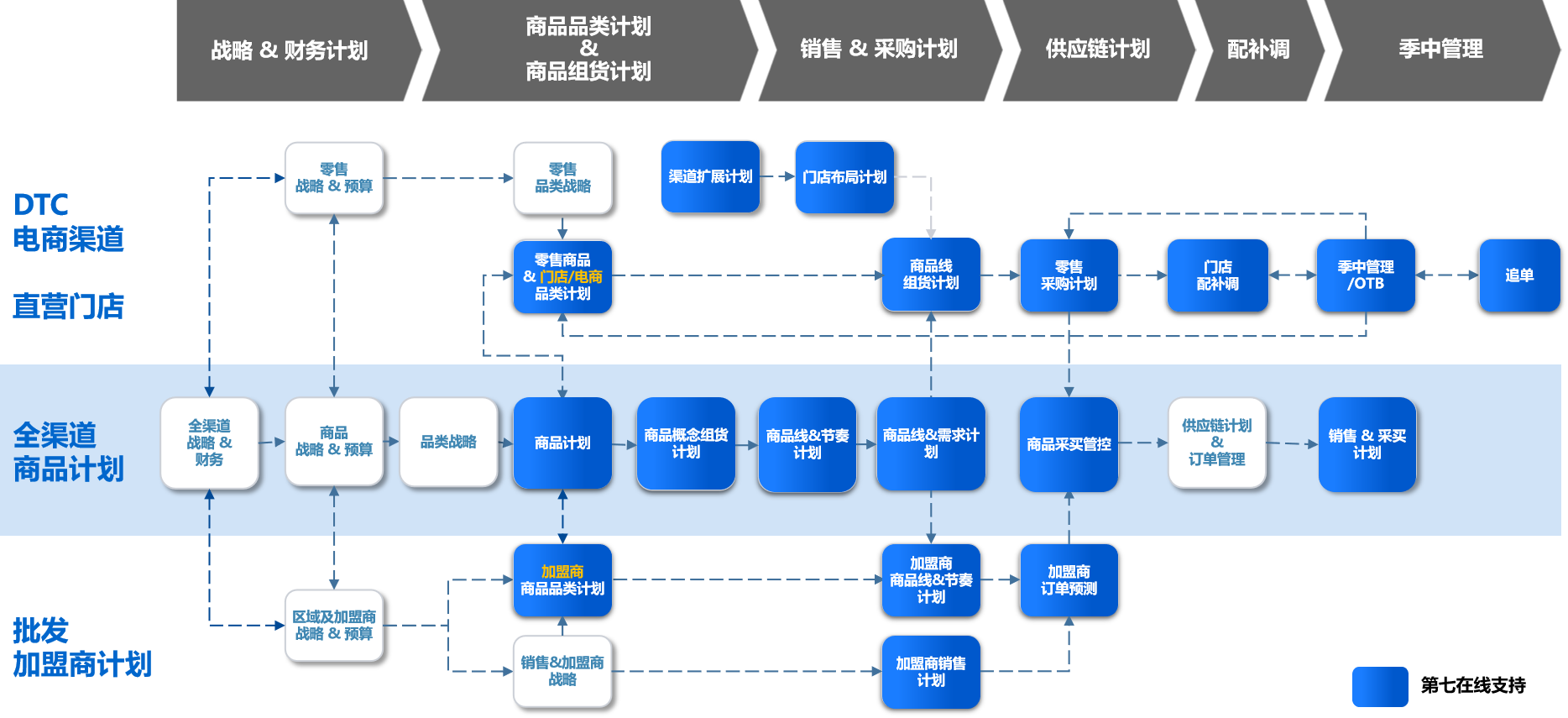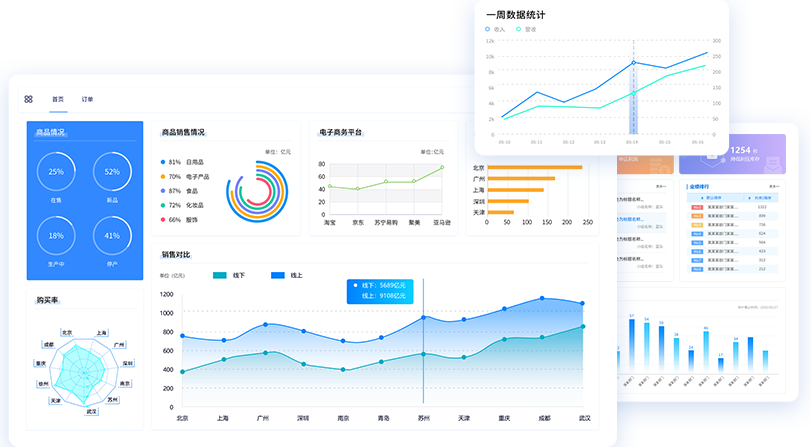
Inventory structure doesn’t align with market trends.
Lack of a rational purchasing plan.
Missed sales opportunities due to out-of-stock colors and sizes.
Low sell-out rates and turnover rates for regular-priced products.

There are many and complex SKUs, making it difficult to classify and manage them
Multiple warehouses make it difficult to share information on tiered inventory
Manual data recording is costly and inefficient

Existing systems were unable to cope with the ever-changing nature of business scenarios.
Sales forecasts were inaccurate, making merchandise planning difficult to execute.
Data accuracy was low, and traditional analytical dimensions were limited.

Significant order fluctuations during peak and off-season periods
Slow processing times for follow-up orders and promotions
High transfer costs and low efficiency
Poor out-of-stock control


Comprehensively integrate distribution, direct retail and e-commerce models, effectively plan and control orders from various channels.
Provide timely feedback and detailed analysis of product demand in various regions, assist brands in successfully predicting product sales performance, and efficiently formulate product plans.
Rapid mid-season replenishment, output automatic replenishment, allocation, and sinking decisions according to the customer’s actual management process, improve consumer satisfaction and product sell-out rate
Data unification and information sharing among various business departments enable brands to respond sensitively to the needs of various channels and regions.


Provide standardized commodity planning and ordering management platform
Develop pre-season product category plans for brands and customers, and grasp the product strategies and needs of customers in various regions in advance.
Use built-in BI to deeply analyze product styles and historical sales, identify the best product style combinations for customers in various regions before the order fair, and develop order fair order modules for agent customers in advance.
Brand headquarters and regional business units/distributors can compare sales targets with regional sales forecasts, key customer sampling results, and order drafts before the order fair, and summarize and analyze order drafts at any time to adjust product strategies and production plans in a timely manner.
All canceled or newly added styles are automatically updated and noted in the system, and all confirmed orders are efficiently collected and integrated, and directly converted into production orders, which improves order processing efficiency and accuracy.
Analyze and evaluate sales targets, product plans and actual sales status after the season to improve the accuracy of future plans.

Providing pre-season solutions
Refined retail product management
Weekly OTB/mid-season sales management
Built-in BI business intelligence platform


Conduct differentiated product management and quantify the direct sales impact of different products and web page placements.
The system uses intelligent actuarial methods to capture consumer trends and generate demand forecasts.
Integrate demand, budget, inventory, and sales information to recommend product plans and page placements.
Recommend optimal promotional strategies and the most profitable product plans and combinations, and coordinate product plans for the next sales cycle based on actual operating conditions.
Built-in BI provides merchants with timely, multi-dimensional data display through multi-dimensional reports, providing high-level visibility into real-time sales, inventory, budget, and profits.
Ensure data consistency.

提升毛利率30%,单店利润35%
减少销售机会流失25%,减少消费折扣30%
提高库存周转率1-3倍,降低积压库存36%
提高运营效率3-5倍,减少行政管理费用30%
降低物流成本,人员节省78%
预测建议采纳度98.5%
